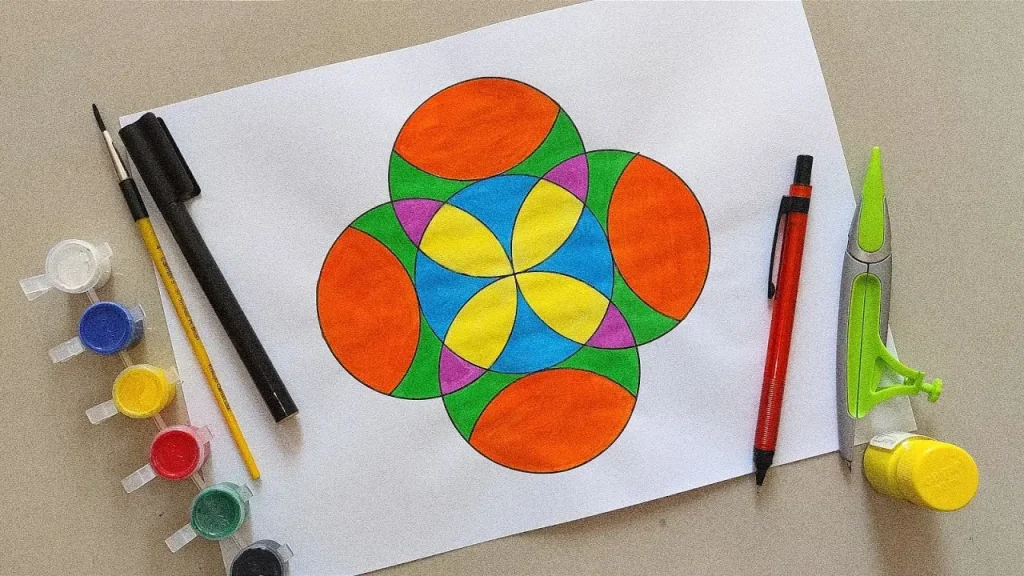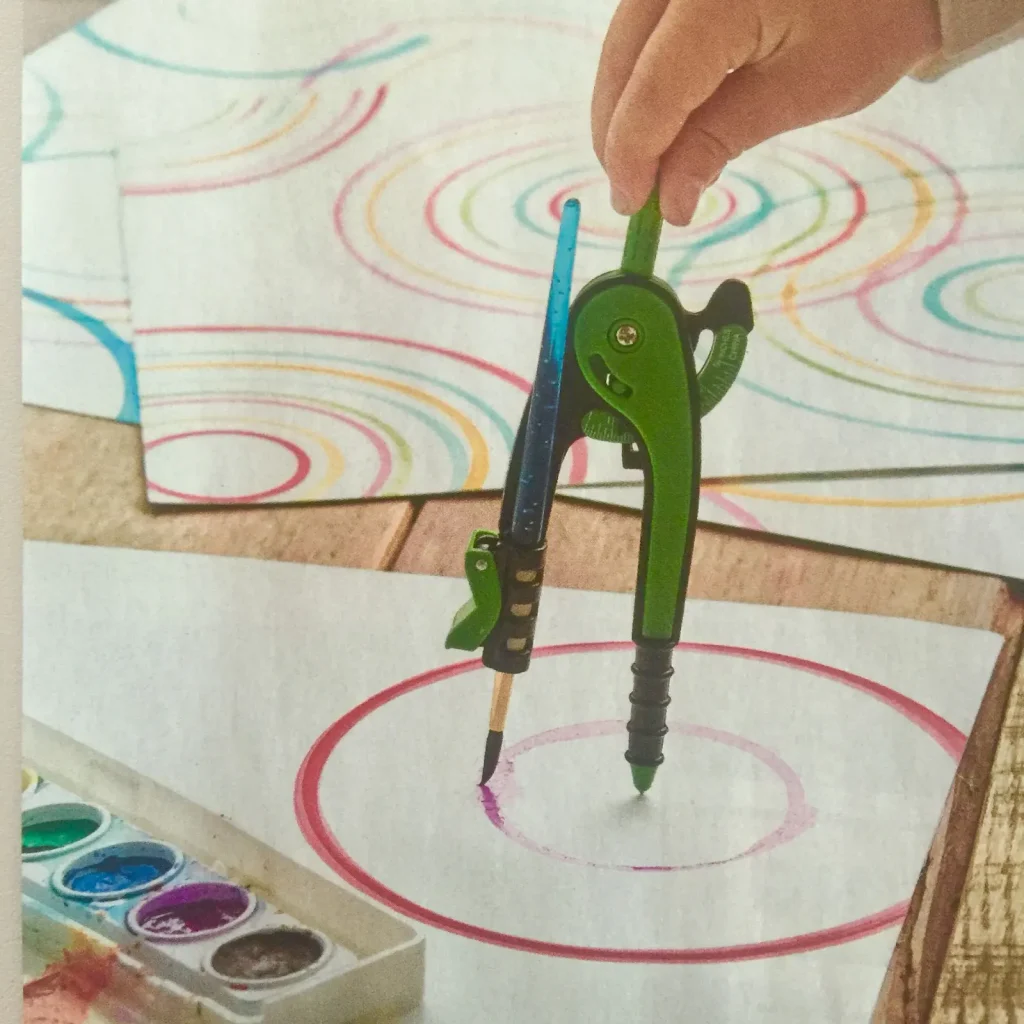Carts And Wheels – Complete Guide For Class 4 Math Chapter 8
Welcome to iPrep, your Learning Super App. Our learning resources for the chapter, Carts and Wheels in Mathematics for Class 4th are designed to ensure that you grasp this concept with clarity and perfection. Whether you’re studying for an upcoming exam or strengthening your concepts, our engaging animated videos, practice questions and notes offer you the best of integrated learning with interesting explanations and examples.
Carts And Wheels
The chapter “Carts and Wheels” introduces students to important concepts related to circles and their properties. Students learn how to draw a circle using a compass, focusing on understanding the center of the circle and its role in creating perfect symmetry. The chapter “Carts and Wheels” also covers key terms like radius, diameter, and circumference, explaining how they are related to the shape and structure of a circle.
In addition, students explore practical activities, such as making circular designs and patterns using a compass. These activities help reinforce the concept of symmetry and rotation in real-life objects like wheels and gears. The chapter “Carts and Wheels” also emphasizes how circular motion is essential in the design of carts and other wheeled objects. By engaging in drawing, measuring, and observing circular shapes, students develop a strong foundational understanding of geometry, symmetry, and motion in the world around them.
The chapter “Carts and Wheels” provides an interesting introduction to circles and their properties. Students start to see the connections between mathematics and everyday life when they learn how to draw perfect circles and watch wheels in action. This chapter – Carts and Wheels highlights the principles of symmetry, rotation, and circular motion, and it uses real-world objects like carts and wheels to express these concepts. Students will also study the geometric characteristics of circles, including circumference, diameter, and radius, and practice drawing circles with a compass.

Let’s examine the essential words and ideas in the chapter “Carts And Wheels” in more detail.
Key Terms and Concepts
1. Circle
A circle is a simple closed shape with uniform distances between all of its edge points and the center. The wheels of a bicycle and the form of a coin are only two examples of the many circles that surround us. A circle is smooth and continuous, lacking any edges or corners.
- For example: Imagine the wheels on a vehicle. The cart moves smoothly when pushed because of the rounded form of the wheels. Imagine how much more difficult it would be to move the cart if the wheels were square since it wouldn’t roll smoothly!

2. Center of the Circle
A circle’s center is the point from which all of the circle’s edge points are equally spaced. The center of a circle drawn with a compass is the spot where the pin is placed. Knowing the center is essential because it enables us to draw a balanced perfect circle.
- For example: Set the compass needle at a point on the paper before drawing a circle with it. The center has been found at that point. The compass then forms a perfect circle around that center when you revolve it.

3. Radius
The radius measures the separation between any point on the circle’s edge and its center. Because the circle is symmetrical, the distance is constant. Additionally, the radius is half the diameter’s length (which we’ll talk about next).
- For example: If you draw a circle with a compass and the distance between the compass pin (center) and the pencil is 3 cm, then the radius of the circle is 3 cm. Each point on the circle’s circumference is three centimeters from the center.
4. Diameter
The diameter is the length of the circle measured from one side to the other through the center. Since the diameter crosses through the center and spans the entire breadth of the circle, it is twice as long as the radius.
- For example: If a circle had a radius of 4 cm, its diameter would be 8 cm as diameter = 2×radius.

5. Circumference
The circumference is the total distance around the edge of a circle. It’s the “perimeter” of the circle. You can think of it as the length of a piece of string that would fit perfectly around the circle’s edge.
- For example: Imagine you have a wheel and you want to know how far it rolls with one complete turn. The distance it travels in one rotation is the circumference of the wheel. For a small wheel, the circumference will be smaller, and for a larger wheel, the circumference will be bigger.

6. How to Draw a Circle
We use a compass to make a perfect circle. A compass is a two-legged instrument with a pencil for drawing circles on one leg and a sharp point that remains fixed in the center on the other.
Creating a circle in steps:
- Position the compass’s sharp tip in the middle of the desired circle drawing area.
- To get the correct length, adjust the distance between the compass legs; this will be the circle’s radius.
- To make a perfect circle, turn the compass 360 degrees while holding the center in place.
- For example: Suppose you want to draw a circle with a radius of 5 cm. You would set the compass to 5 cm and draw the circle by rotating the compass around the center.
7. Making Circular Designs
Students can make a variety of circular patterns and designs by using a compass. Students can draw circles with overlapping edges and alter the radius to produce beautiful geometric creations. This exercise helps to strengthen students’ knowledge of circles and symmetry.

- For example: by drawing circles with the same center but different radii, students can make designs that resemble flowers. This is a wonderful approach to examining the properties of circles while encouraging creativity.
8. Symmetry
If two equal pieces of a shape have the same appearance, the shape is said to have symmetry. Because both sides of a circle will seem precisely the same if you cut it in half from the center in any direction, circles are completely symmetrical. We refer to this as radial symmetry.

- For example: Think of a bicycle wheel as an example. The wheel has symmetry because both sides will appear the same if you imagine separating it in half from top to bottom.
9. Rotation
The circular movement around a fixed point is referred to as rotation. Carts can move smoothly because of the axis around which the wheels rotate. Numerous real-world items, including car wheels, gears, and clocks, depend on this motion.
- For example, A cart moves forward with the assistance of its wheels rotating around its center when you push it. The cart slides across various surfaces with ease thanks to the smooth wheel movement.

10. Uses of Circles in Real Life
Understanding circles is important because they are used in many practical situations:
- Wheels: Carts, bicycles, cars, and other vehicles use wheels to move efficiently.
- Clocks: The circular shape of clocks helps us track time as the hands rotate around the center.
- Gears: Many machines use circular gears to transfer motion.
Related Examples
Let’s now better understand the practical application of the concepts of Carts and Wheels with the help of some related examples.
Example 1: Moving a Cart
Visualize a wheeled cart. Because the wheels are circular, pushing the cart causes it to roll smoothly. The cart would be more difficult to maneuver if the wheels had a different form, such as square ones. Wheels roll continuously and evenly, which makes them perfect for carts and other vehicles.

Example 2: Drawing Circles for a Design
Let’s say you are creating a circular garden. Around a fountain, you wish to arrange flowers in a circle. You must draw circles of varying sizes to symbolize the various garden portions to plan the garden. You may quickly and simply make accurate circles with a compass to assist arrange the planting zones.

Example 3: Using a Compass in Crafts
Using a compass, draw circular patterns to create a decorative design for a school project. Circles can be used artistically to create complicated shapes like mandalas or flower patterns by modifying the radius and layering circles.

Activities and Problem-Solving
The chapter – Carts and Wheels, encourages students to engage in hands-on activities that solidify their understanding of circles. Let’s explore one such activity:
Activity: Drawing and Comparing Circles
- Provide each student with a compass, a ruler, and paper.
- Ask the students to draw circles of various radii (e.g., 2 cm, 4 cm, and 6 cm).
- Once the circles are drawn, have them measure the diameter of each circle using a ruler.
- Ask the students to compare the different circles and find the relationships between the radius, diameter, and circumference.
Through this activity, students will understand how the size of a circle changes when the radius changes. They will also practice using tools like the compass and ruler, improving their drawing and measurement skills.
Problem-Solving Example
Let’s now solve a problem to better understand the concepts of the chapter “Carts and Wheels”.
Problem: If the radius of a wheel is 7 cm, what is the diameter of the wheel?
Solution:
We know that the diameter is twice the radius.
Diameter = 2×Radius = 2 × 7 cm=14 cm
So, the diameter of the wheel is 14 cm.
Conclusion
In conclusion, the chapter Carts and Wheels provides a solid foundation for understanding the geometry of circles and their real-life applications. Through engaging activities, students learn how to draw circles, grasp key concepts like radius, diameter, and circumference, and observe the significance of circular motion in objects like carts and wheels. By mastering these concepts from CBSE Class 4 Math Chapter 8 – Carts And Wheels, students not only enhance their mathematical skills but also gain a deeper appreciation for the role circles play in everyday life. With its hands-on approach and practical examples, Carts and Wheels ensures that learning math is both fun and meaningful. Keep practicing, and soon you’ll be a pro at everything covered in Carts and Wheels!
Practice questions on Chapter 8 - Carts and Wheels
Get your free Chapter 8 - Carts and Wheels practice quiz of 20+ questions & detailed solutions
Practice Now








